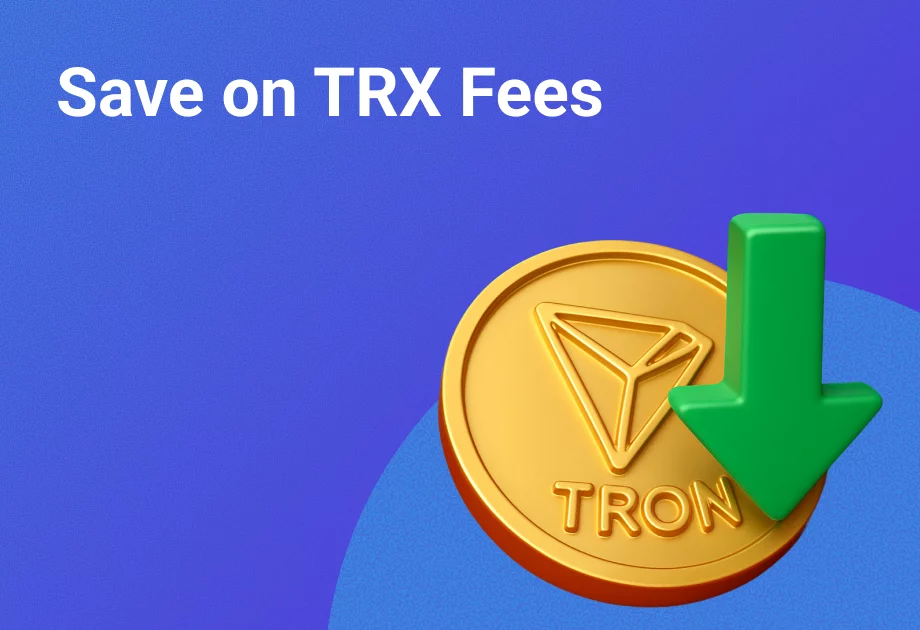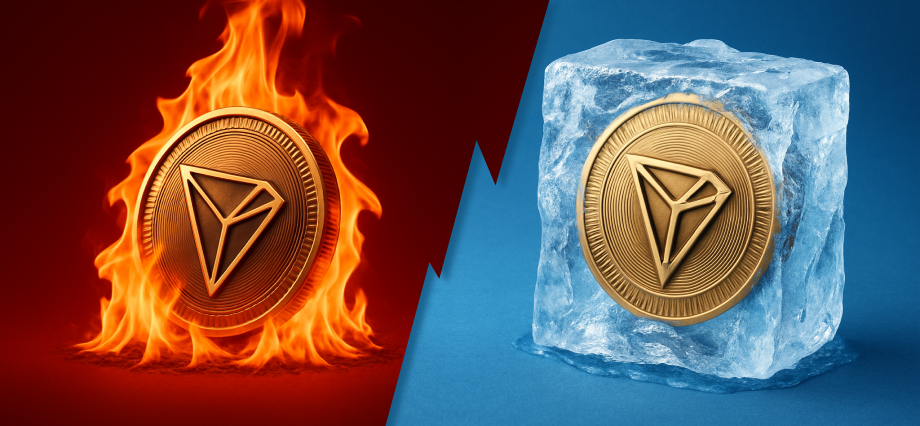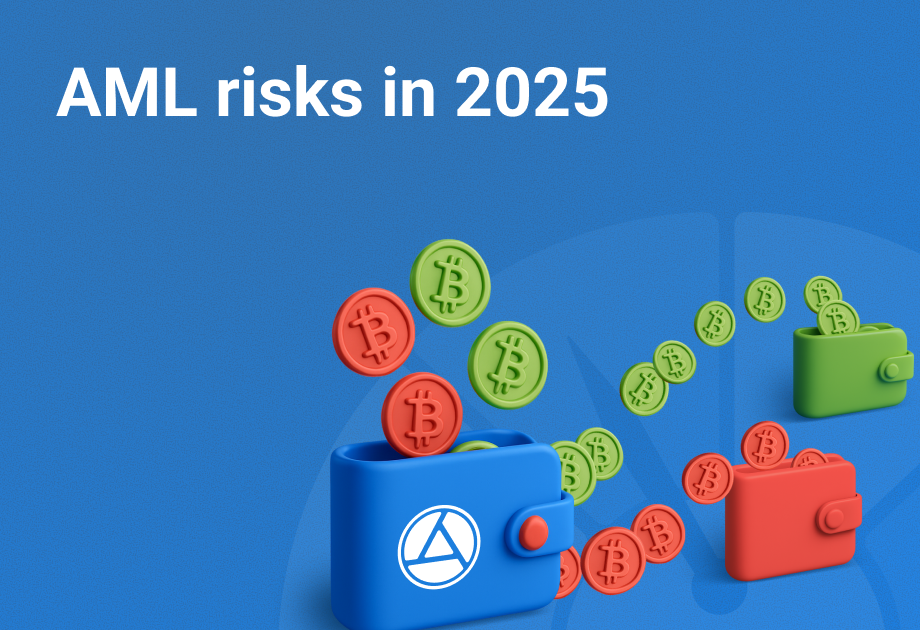USDT TRC20 Transactions: How to Save Up to 50% on Tron Fees
How to stop counting TRX for every transaction and pay almost half as much.

For businesses, transactions on the Tron network often become problematic: it’s hard to calculate fees in advance, they can get stuck due to insufficient TRX, and with a high volume of payments, fees become a significant expense. Additionally, paying fees with TRX is inconvenient and requires constant balance monitoring.
In this article, we explain how USDT-TRC20 fees work and share a way to pay fees easily on the Tron network while saving up to 50% — with no complicated calculations or payment interruptions.
Key Takeaways
- Tron has become the primary network for USDT due to its low fees, high speed, and stable blockchain performance.
- TRC20 transfers use Bandwidth and Energy resources instead of traditional Gas.
- Free Bandwidth usually covers 1–2 transactions per day. Energy requires freezing or burning TRX.
- Businesses often overpay on fees due to lack of TRX, not understanding the mechanics, or using expensive services.
- You can save by freezing TRX, avoiding network peak times, and using wallets with automatic resource optimization.
- With the BitHide Telegram Bot, you can reduce TRX costs and pay up to 50% less! Just start the bot, add your address, and rent Energy. Forget about TRX counting and high fees.
Why Tron Became the Primary Network for USDT
As of May 2025, the total USDT supply is $151.2 billion. Of this, over 50% — $75.7 billion — is on TRC-20.
The Tron (TRC20) network attracts users with:
- High speed: up to 2000 transactions per second with confirmation in seconds.
- Scalability: the blockchain handles large transaction volumes without delays.
- Broad support: TRC-20 is supported by most wallets and exchanges, simplifying integration.
- Network reliability: Tron’s blockchain is highly stable and efficient.
This makes Tron popular not only among regular users but also businesses, OTC operators, and P2P platforms.
How the Tron Blockchain Works: What You Need to Know
TRX is the main utility token of the Tron blockchain. It acts as “fuel” — used for activating new addresses, staking, paying fees, and performing other network operations. Tron uses the Delegated Proof of Stake (DPoS) consensus mechanism, where transaction validation is handled by selected network participants known as super representatives.
Where Tron Network Fees Come From
The TRON network operates on resource allocation. To stake, vote for super representatives, or become one yourself, you must freeze TRX. Freezing tokens can be done in two ways: to obtain Bandwidth or to accumulate Energy.
What Are Gas, Bandwidth, and Energy
Gas
On Tron, Gas is the fee for any network operation — whether transferring tokens or executing smart contracts. It’s essentially the cost of using system resources. Unlike Ethereum’s classic Gas, Tron uses two resources for calculations: Bandwidth and Energy.
Bandwidth
Bandwidth is needed for most actions on the Tron network: activating or freezing addresses, sending utility tokens. When creating a new wallet, users automatically receive 600 units of Bandwidth, usually enough for 1–2 TRX transactions.
Energy
Energy is used to execute smart contracts on Tron. Unlike Bandwidth, Energy isn’t given for free and must be obtained by freezing or burning TRX.
What Exactly You’re Paying for When Sending USDT TRC20
When sending USDT via TRC20, the fee pays for network load. It covers blockchain resources so your transaction is processed and recorded. This payment doesn’t go to a person but to the network nodes (Tron nodes) that use their resources to confirm and store your transaction.
How Resources Are Accumulated and Used

Bandwidth is consumed for transactions and other network operations but is automatically replenished to 600 units every 24 hours. If this base amount isn’t enough, it can be increased by freezing TRX.
For each frozen TRX, you get about 1.08 additional Bandwidth units. To double your daily Bandwidth and send 3–4 TRX transactions without fees, you need to freeze around 600 TRX, which at the time of writing is about $167.
To obtain Energy, you need to:
- Freeze TRX ~13.86 Energy per TRX. Spent Energy is replenished daily if assets remain frozen.
- Burn TRX ~2381 Energy per TRX.
Example of Resource Use
Sending USDT on TRC20 requires around 32,000–70,000 units of Energy. If you only make one such transaction per week, instead of burning 14–30 TRX each time, you can freeze around 2300–5000 TRX for Energy. These assets will generate the necessary Energy daily for free transfers.
However, it’s up to the user: keep $650–$1400 frozen in TRX or pay per transaction. For frequent or mass transfers, freezing is more cost-effective, so businesses need to optimize Tron fee spending.
Reasons for Overpaying Fees
No TRX Balance
Without TRX on balance, you can’t freeze tokens to get Bandwidth or Energy, so you pay the full fee.
Not Using Free Bandwidth
Every account gets a small amount of free Bandwidth daily, but many users don’t know this and keep paying for transfers.
Not Freezing TRX
Freezing TRX provides Bandwidth and Energy, enabling nearly free transactions. Without freezing, users spend extra on fees.
4 Ways to Reduce USDT TRC-20 Commissions
1. Freeze TRX to Get Bandwidth and Energy
TRON lets you freeze TRX to get:
- Bandwidth — allows sending transactions without paying in TRX.
- Energy — used for smart contracts, including token transfers like USDT-TRC20.
If you have enough Bandwidth and Energy and send during low network usage, your fee will be zero.
2. Use BitHide Energy Bot
Forget about high USDT TRC20 fees — pay less with the BitHide Energy Bot. Now anyone can use Energy without hassle via our simple Telegram bot.
Just hit “Start,” add your address, top up your balance, rent Energy, and send transactions. No more calculating TRX, overpaying for fees, or trying to understand how Energy works.
Try it now!
3. Avoid Peak Network Periods
When the network is overloaded, Energy costs skyrocket. Send transfers during low activity to avoid high fees.
4. Optimize Transaction Size
The larger the transaction “weight” (e.g. complex smart contracts), the more Energy it consumes. Simple transfers are cheaper.
How Businesses Can Avoid Overpaying USDT TRC20 Fees
Some payment solutions have built-in automatic resource payments. BitHide, a non-custodial wallet for businesses, provides this feature. USDT TRC-20 transactions are paid automatically via Energy, resulting in minimized fees.
For user convenience, BitHide has implemented Tron transaction payments via Energy.
With BitHide:
- No need to calculate how much TRX is needed for withdrawals.
- Tron transactions won’t fail due to insufficient fee balance.
- You can save up to 50% on fees.
By default, the wallet deducts fees from the billing balance (BHUSD) instead of the TRX balance. However, users can switch to TRX with one click.
Conclusion
Tron transactions can be nearly free if you understand how Bandwidth and Energy work. Most users overpay simply due to lack of knowledge or no TRX balance for freezing.
BitHide helps businesses reduce costs and simplify payments: fees are paid directly from the BHUSD billing balance, with no calculations or risk of payment interruptions. This saves up to 50% on transfers.
Contact our team to learn how BitHide can help your business use crypto payments securely and efficiently.

